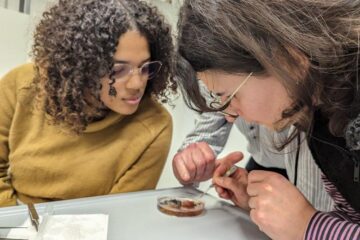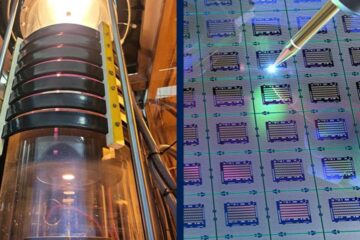More news in the battle between the sexes

By employing experimental evolution to study the effects of mating within and between different insect populations, researchers have gained insight into the ways in which sexual selection can affect fitness and influence various aspects of evolutionary change.
As a consequence of investigating the short-term fitness consequences of mate choice, researchers had largely come to believe that sexual selection is beneficial. However, conflicts between the sexes are ubiquitous and could erode fitness. Although sexual conflict is widespread, its evolutionary consequences remain largely unknown.
In the new study, which broadens our understanding of sexual selection and sexual conflict, Oliver Martin and David Hosken from the University of Zürich subjected flies to experimental evolution for 44 generations and looked at the fitness consequences of evolving under high, low, or relaxed sexual conflict. Their results indicate that foreign males from the conflict populations are more costly to females than familiar males and that sexual selection can be costly to fitness. However, they also found that at intermediate levels of sexual conflict, benefits of sexual selection may outweigh these costs.
These findings support previous work indicating that sexual conflict can cause rapid population divergence, although the proximate mechanism(s) involved remains unknown. Additionally, this work highlights the fact that sexual selection can be costly and generate a fitness load.
Oliver Y. Martin and David J. Hosken: “Reproductive Consequences of Population Divergence through Sexual Conflict”
Published in Current Biology, Volume 14, Number 10, May 25, 2004.
Media Contact
More Information:
http://www.cell.com/All latest news from the category: Life Sciences and Chemistry
Articles and reports from the Life Sciences and chemistry area deal with applied and basic research into modern biology, chemistry and human medicine.
Valuable information can be found on a range of life sciences fields including bacteriology, biochemistry, bionics, bioinformatics, biophysics, biotechnology, genetics, geobotany, human biology, marine biology, microbiology, molecular biology, cellular biology, zoology, bioinorganic chemistry, microchemistry and environmental chemistry.
Newest articles

Peptides on Interstellar Ice
A research team led by Dr Serge Krasnokutski from the Astrophysics Laboratory at the Max Planck Institute for Astronomy at the University of Jena had already demonstrated that simple peptides…

A new look at the consequences of light pollution
GAME 2024 begins its experiments in eight countries. Can artificial light at night harm marine algae and impair their important functions for coastal ecosystems? This year’s project of the training…

Silicon Carbide Innovation Alliance to drive industrial-scale semiconductor work
Known for its ability to withstand extreme environments and high voltages, silicon carbide (SiC) is a semiconducting material made up of silicon and carbon atoms arranged into crystals that is…





















